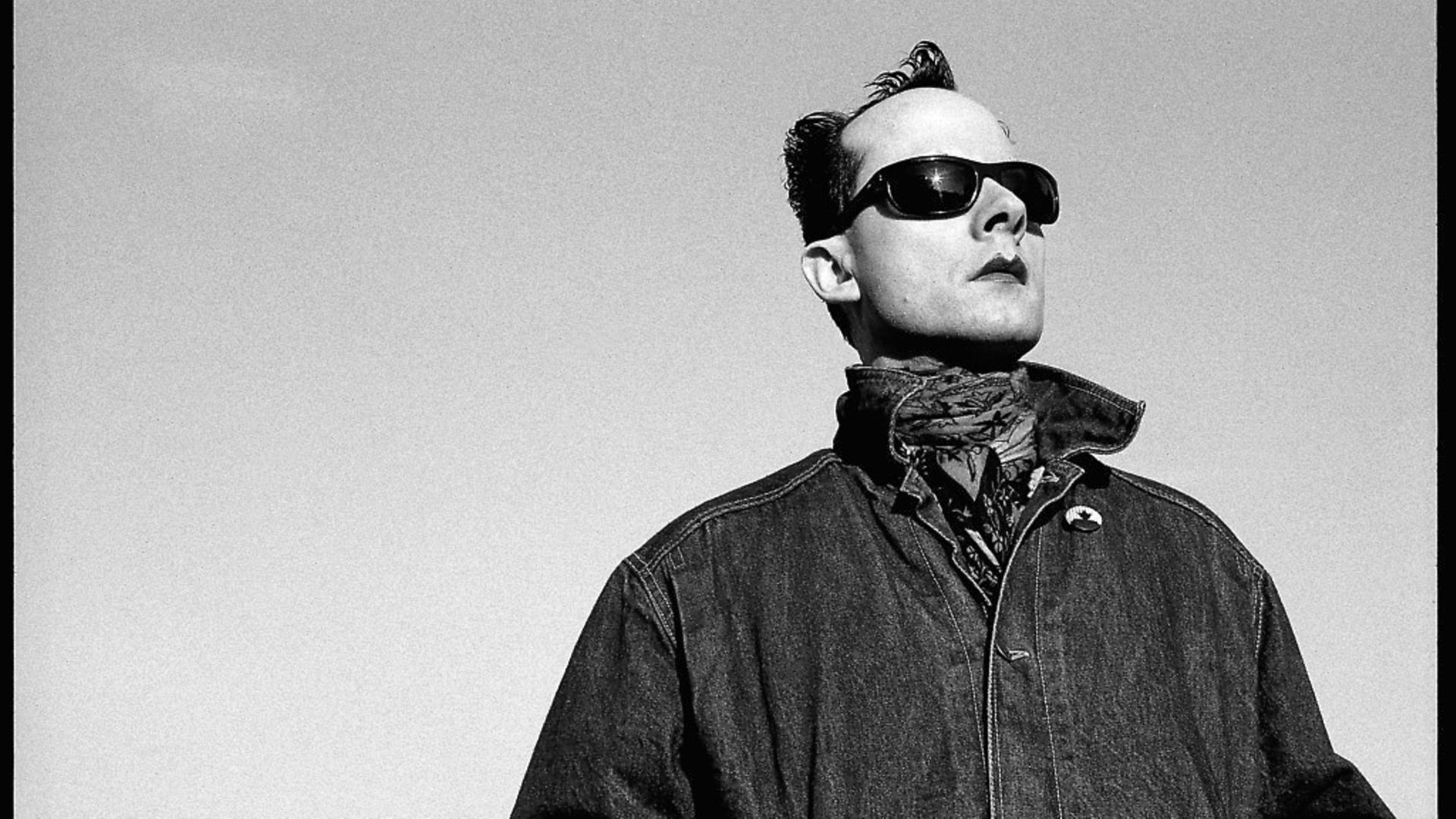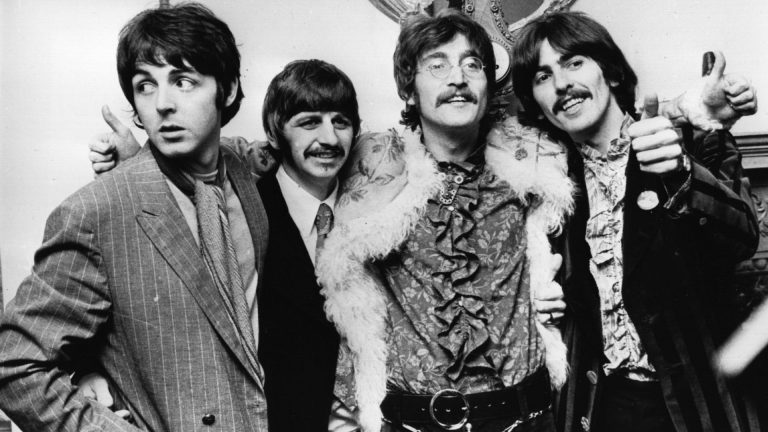
Disco versions of the Sex Pistols, topless dancers and a singing dog – CHARLIE CONNELLY looks at the life of the outrageous vocalist.
There was a glorious anarchy to the New Wave Vaudeville Show that ran over four nights in November 1978 at the Irving Plaza in Manhattan’s East Village. The building was between uses: it had been a social club for Polish military veterans but was about to be converted into a major music venue, lending the event a sense of transition appropriate to its occupants.
The acts included a band playing disco versions of the Sex Pistols dressed in white Stayin’ Alive suits, a man in GI uniform crooning Second World War ballads, topless exotic dancers and a performance art band called Come-On miming to songs while waving instruments made from foam rubber. There was even a singing dog.
‘It’s newer than new,’ cooed co-organiser Ann Magnuson as she introduced the show dressed as an electric blue Cleopatra, ‘it’s you-er than you, it’s now-er than now and it’s wow-er than wow.’
This was the post-Warhol, post-punk generation, people with something to say who weren’t quite sure how to say it yet but until they’d worked out what it was they were going to have a ball anyway. For all the show’s scattergun enthusiasm and air of cultural zeitgeist in search of a cause, an act would take the stage that week that would change everything; for the event, for himself and arguably for the entire New York music and cabaret scene.
It was towards the end of the bill when compere David McDermott announced, ‘Ladies and gentlemen, what you are about to hear is not a recording. This… is real.’
The lights dimmed and there was a scatter of uncertain applause as a low orchestral drone thundered through the speakers. The curtains parted, smoke bombs went off and a man stepped slowly through the fog towards the microphone, palms outward, wearing red PVC trousers, a sleeveless black PVC T-shirt and a clear plastic cape. His dark hair was styled into three points and his face was heavily made up, his eyes regarding the audience with a rare intensity. A few titters ran through the audience as this strange apparition leaned forward into the microphone.
Then he began to sing.
To a crowd who’d spent the evening watching acts who could hit barely one note in three, a counter-tenor singing in a register that was effectively soprano was stunning. In the unlikely surroundings of a post-punk cabaret he sounded as otherworldly as he looked.
This was a rendition of the heatrtrending aria Mon coeur s’ouvre á ta voix from Saint-Saens’ opera Samson and Delilah sung with such feeling and in a voice so crystal clear the atmosphere inside the packed venue transformed in an instant. Gone was the boisterous heckling and whooping that had punctuated the show all evening, instead there was an awed silence that sustained until the last notes had died away. Then a barrage of cheers and applause broke out as the singer backed away from the microphone, palms facing outwards, a blank expression on his face, disappearing behind the closing curtains amid more detonating smoke bombs. Klaus Nomi had arrived.
‘Everyone else in the show was charming, inept, funny,’ said Nomi’s future musical collaborator Kristian Hofmann. ‘They were all in this community where they were palling around together doing this kind of punk version of Mickey Rooney. Then Klaus came on and it was a whole different level of accomplishment. I still get goose pimples when I think about it,’ remembered fellow performer Joey Arias. ‘It was like he was from a different planet and his parents were calling him home: when the smoke cleared he was gone.’
Klaus Sperber had turned up in New York in 1972. Born in Bavaria he was raised in Berlin nurturing equally fervent passions for opera and pop music. Having taught himself to sing like his heroes Maria Callas and Elvis Presley, Sperber worked as an usher at the Berlin Opera and would serenade his colleagues from the stage as they cleaned up after the shows as well as performing occasional arias at Berlin’s leading gay club, the Kleist Casino.
When he landed in New York he found work as a pastry chef at the World Trade Center and soon became a well-known face on the city’s gay circuit. Other than a role in a camp production of Wagner’s Das Rheingold shortly after arriving in the US, however, the New Wave Vaudeville show was his first public performance and his first outing under the name Klaus Nomi, inspired by the US science-fiction magazine Omni.
Within a year Nomi had become a mainstay of the New York performance art scene, appearing as a backing singer for David Bowie as part of an unforgettable Saturday Night Live performance in December 1979. Soon he had perfected his image as a robotic mannequin from outer space, taking the stage in an exaggerated Weimar-style plastic tuxedo, all huge shoulders and sharp angles that would have been too much even for F.W. Murnau at his expressionist height. His stage ensemble was topped with white kabuki-style make-up and jet-black hair, lending Nomi an entirely monochrome appearance.
If he was like nothing anyone had ever seen, when he sang it was like nothing anyone had ever heard. His shows, a combination of offbeat covers including Ding-Dong! The Witch is Dead from The Wizard of Oz and Chubby Checker’s The Twist, original electronic pop songs and operatic arias filled clubs and venues in New York and led to his debut LP, 1981’s Klaus Nomi. The following year saw a second album, Simple Man, and a lengthy tour of Europe, during which Nomi’s health began to decline dramatically. Believing at first he was just exhausted from a gruelling schedule he kept working, dosing himself with antibiotics and injections to keep his voice intact. The fatigue and a constant head cold persisted, however, and when lesions began to appear on his body it was clear that something was very wrong indeed. When Nomi returned to New York in early 1983 friends were shocked at his appearance.
‘He was always thin but I remember him walking into a party looking like a skeleton,’ recalled Arias. ‘He was complaining of flu and exhaustion, and the doctors couldn’t diagnose what was wrong with him. Later he collapsed and was taken into hospital.’
By the spring of 1983 Nomi’s immune system had failed and he was diagnosed with AIDS, a condition still in its infancy but already spreading fear through the US gay community in particular. There was only a limited amount doctors could do, they barely understood the nature of the syndrome let alone devise effective treatments, and in August 1983 Nomi died at a New York cancer hospital less than five years after that remarkable performance at Irving Plaza. He was 39 years old.
His last public performance had been on December 9, 1982, as part of Eberhard Schoener’s annual Classic Rock Night, broadcast live on German television from an arena in Munich less than 100 miles from Immenstadt, the town close to the Swiss border where he was born.
The show was at the end of a gruelling tour and Nomi was clearly very ill. He’d always been thin but as he ascended the steps to the stage he was almost skeletal, dark shadows beneath his cheekbones, eyes set deep in his skull. It’s possible he’d guessed what was wrong with him and his choice of song suggests he knew he might not have long to live. It was a hauntingly unforgettable performance.
Wearing a scarlet Elizabethan style tunic with a white ruff collar Nomi walked slowly onto the stage with his arms extended and palms turned outwards, just as he had at Irving Plaza barely four years earlier. The orchestra struck up the mournful staccato chords that introduce the aria Cold Genius from the third act of Purcell’s 1691 opera King Arthur.
It’s a scene where Cupid wakens Cold and instructs him to cover the landscape with ice and frost. Cold’s part in the opera is written for a bass and the aria is performed legato, smoothly, with barely a break between the notes. Nomi sang it in his trilling countertenor in a staccato style, broken down syllable by syllable, coming out almost in gasps. The effect was chilling.
‘What power art thou, who from below, hast made me rise unwillingly and slow from beds of everlasting snow?’ he demanded of Cupid. ‘See’est thou not how stiff and wondrous old, far unfit to bear the bitter cold, I can scarcely move or draw my breath?’ The melody moved higher up the register, Nomi’s hands rose from waist height until they were almost level with his breast. He delivered the final line, employing the only extended note of the entire performance on the very last word, sustaining it for several seconds with a power that belies his frail appearance.
‘Let me,’ he sang, his eyes widening, imploring, becoming almost manic as he makes his climactic demand, ‘let me freeze again, to death.’









